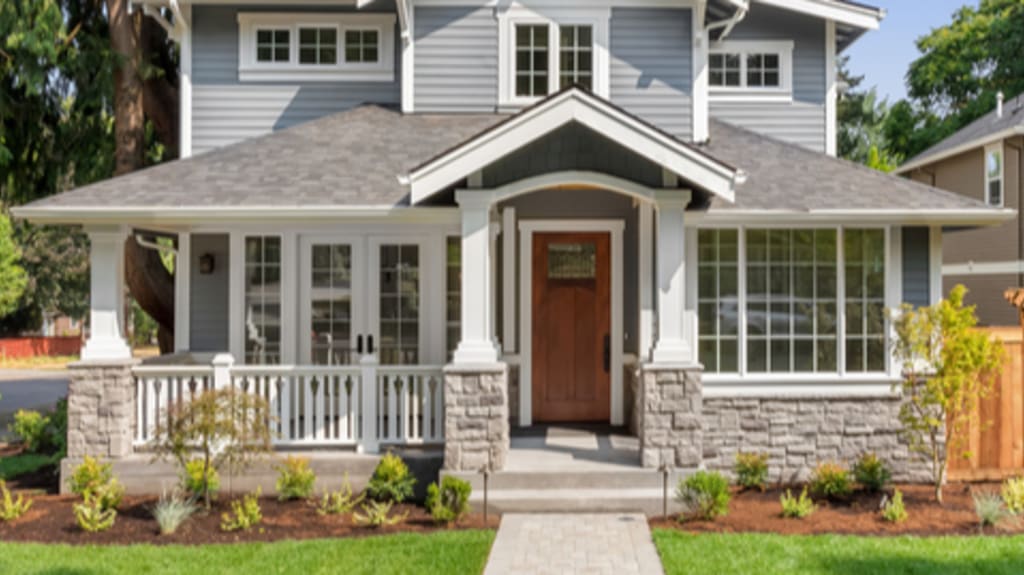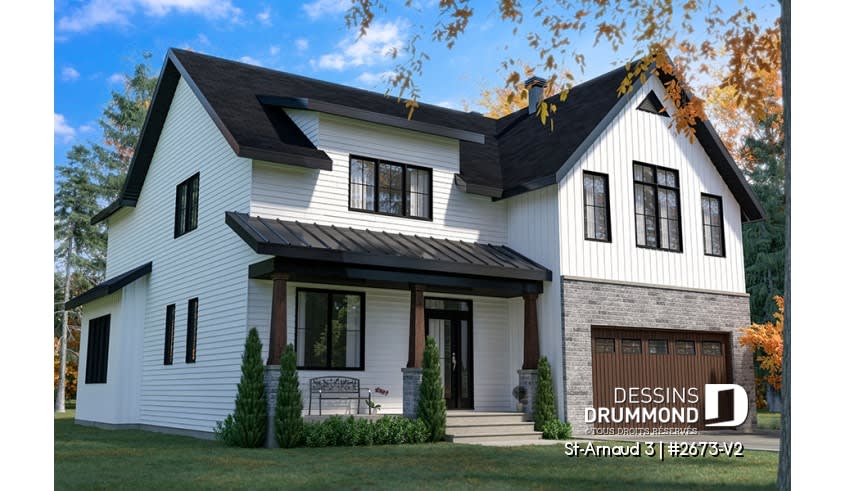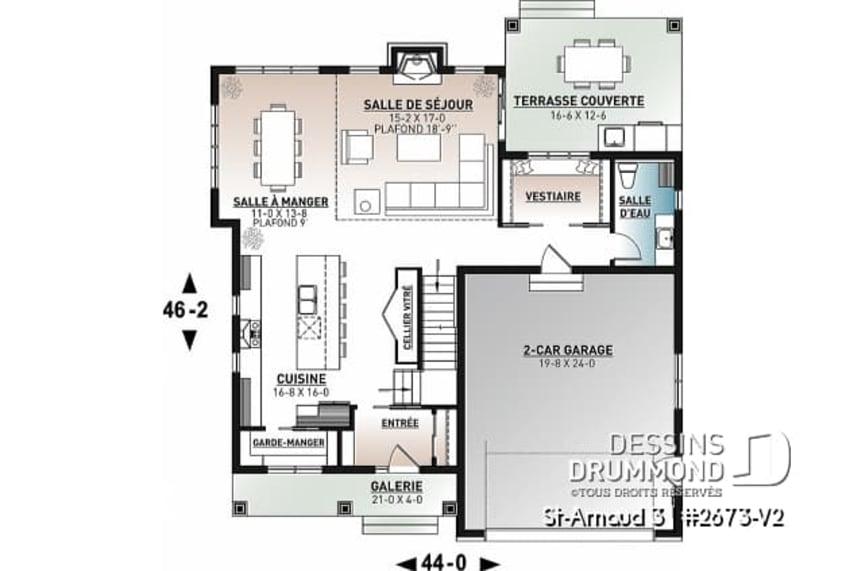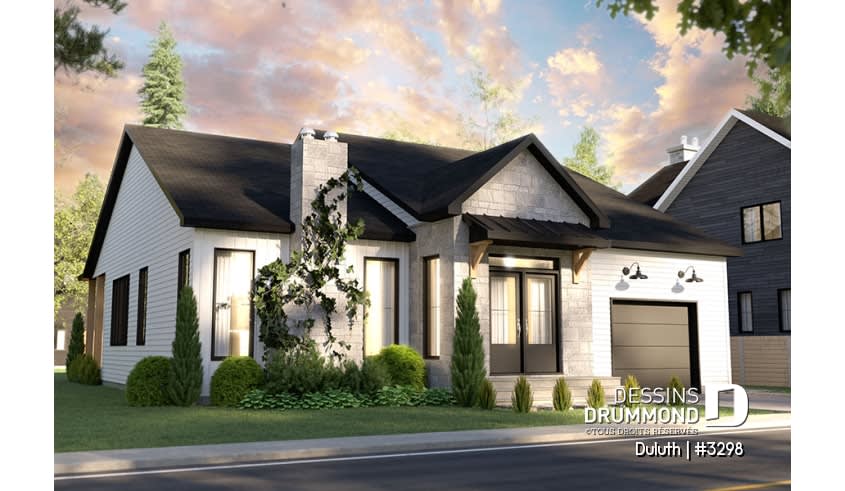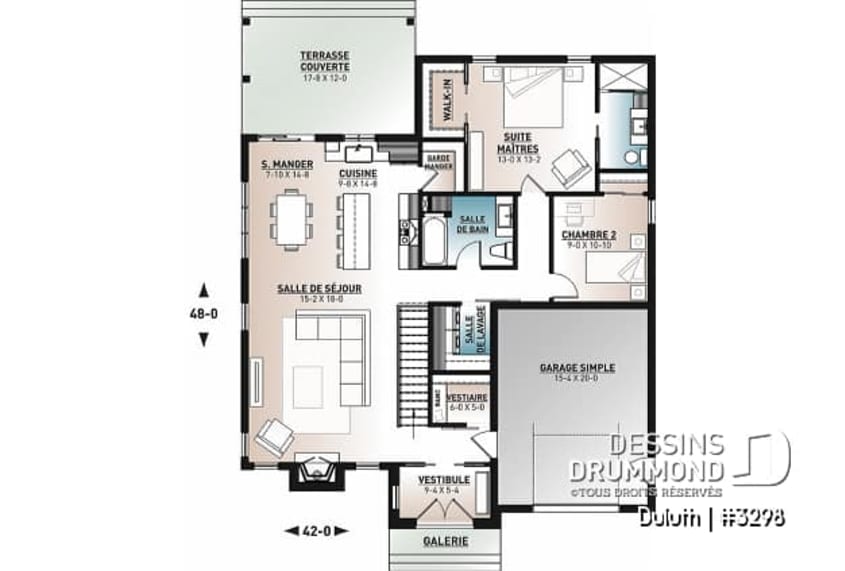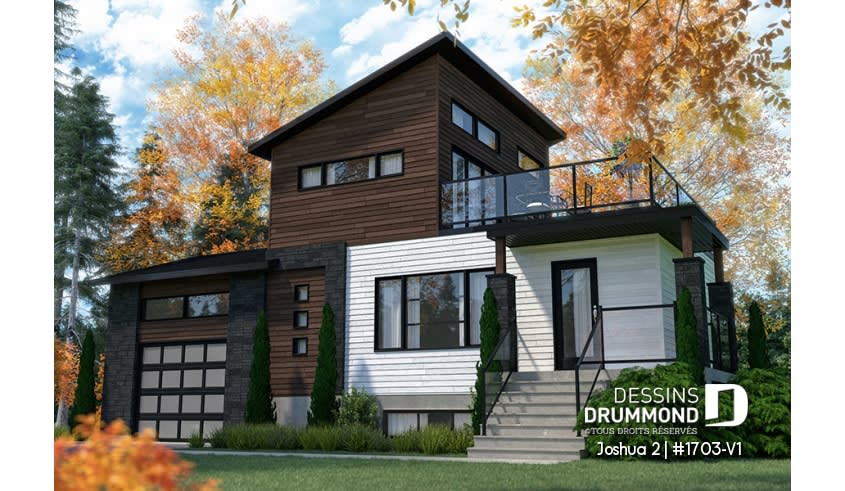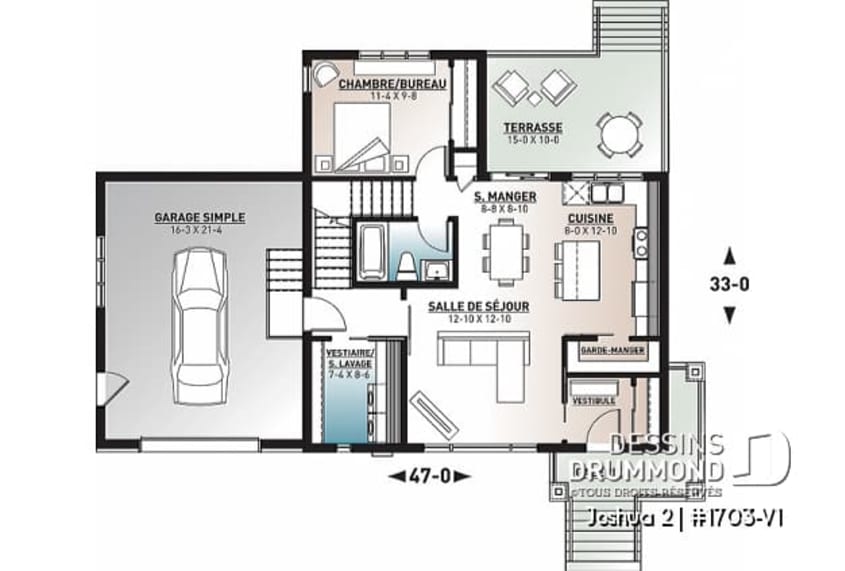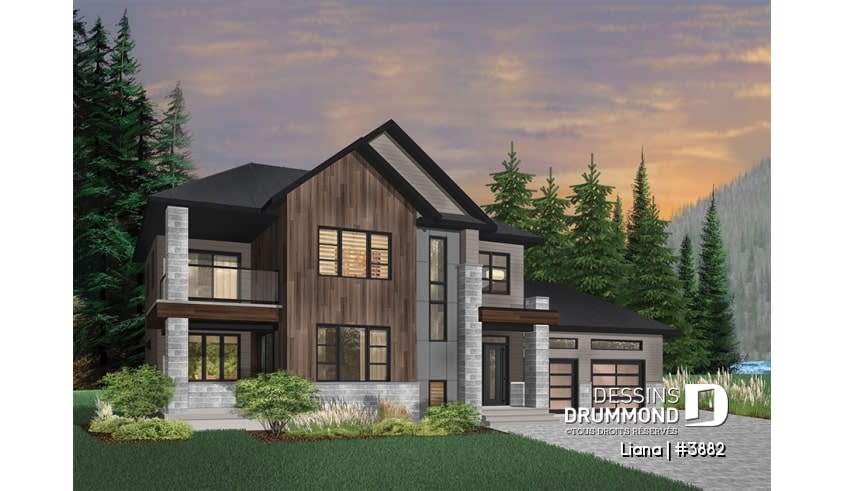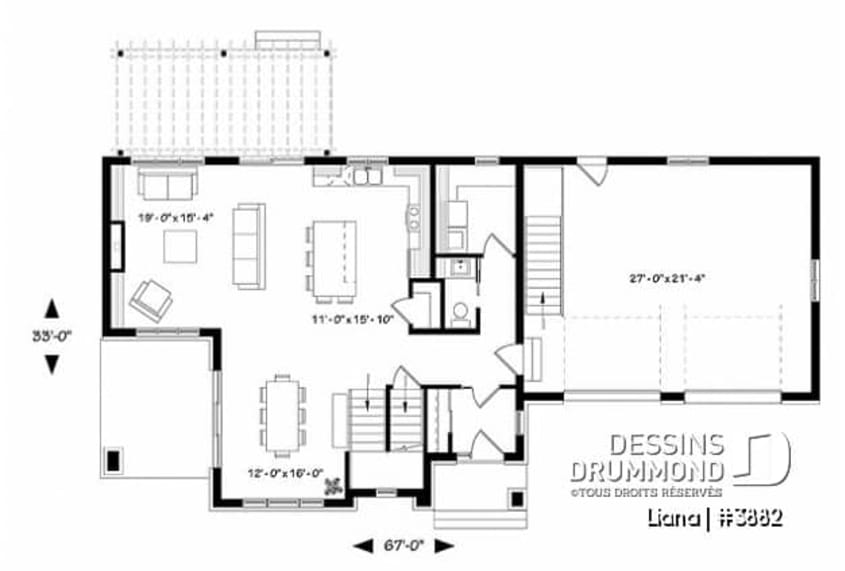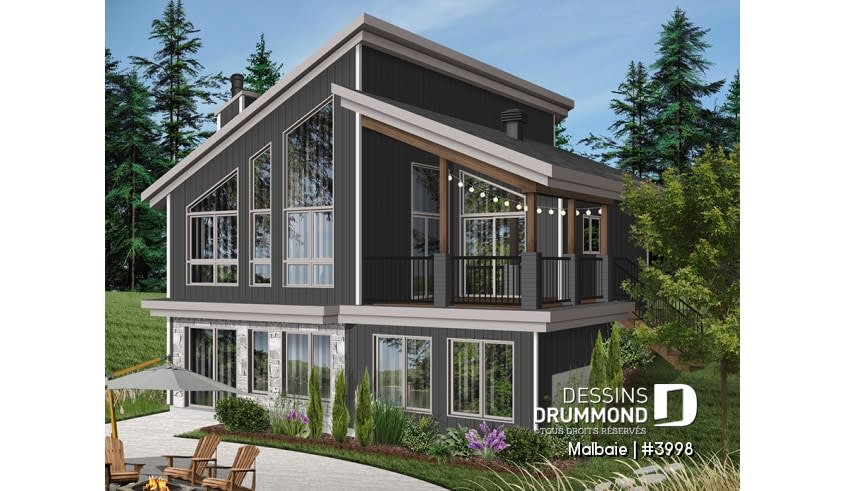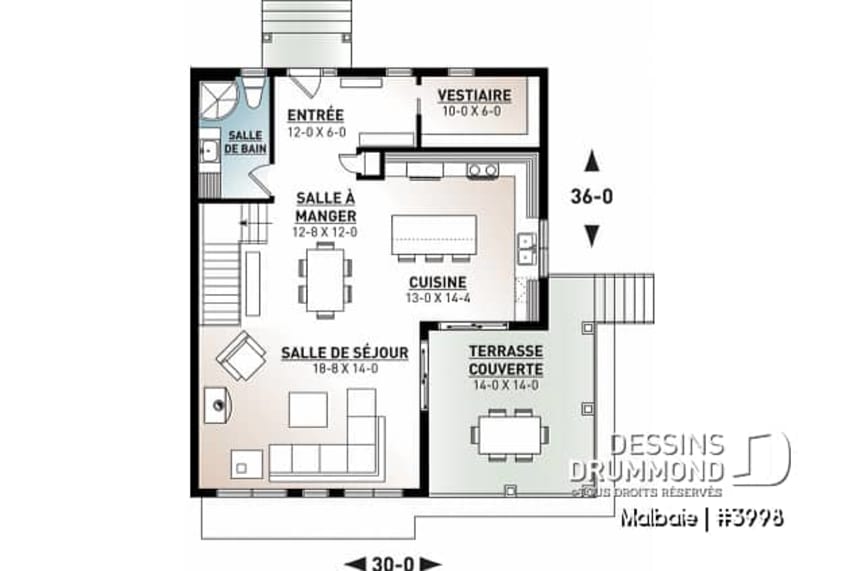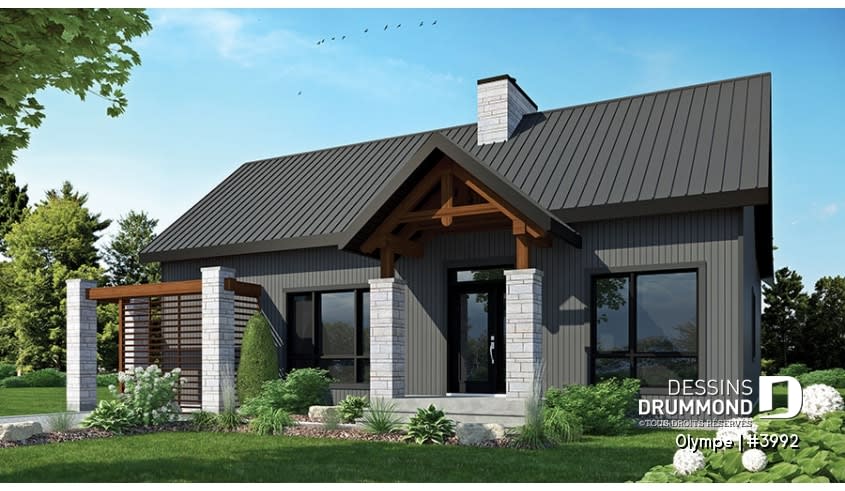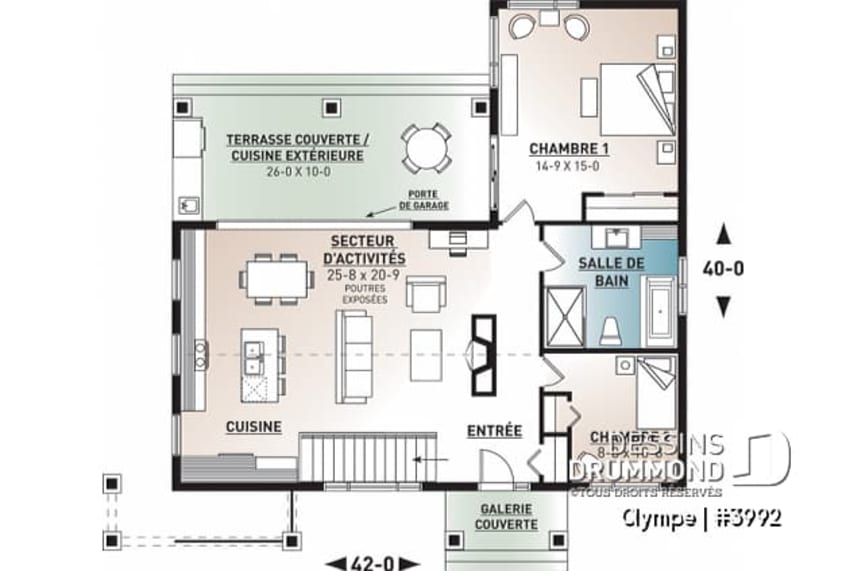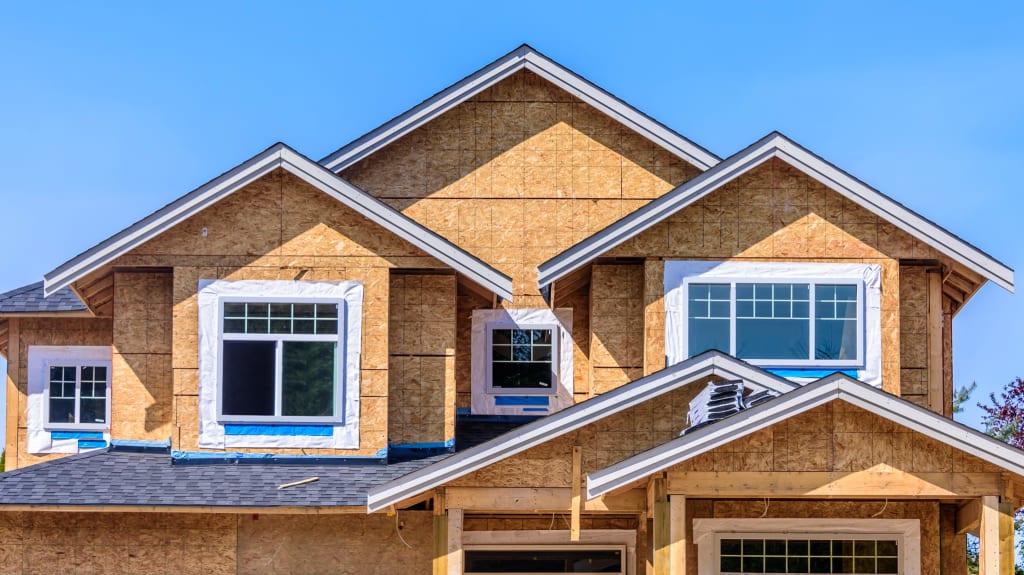Is there anything more exhilarating than building a house? Whether you’re building a cute cottage, a tiny home, or a luxurious mansion, chances are that you’re already armed with magazine clippings, Pinterest boards, and a few paint and tile samples. New construction homes come with a unique set of challenges, so you’ll need a few professionals to help ensure that your floor plan, materials, and general aesthetic make sense given your tastes, needs, and budget. To help you get an idea of what decisions you’ll need to make, here are some things to consider before building a house in Ontario or Quebec.
1. Buy the right lot
Before you even start building a house, you need to find a place to build it. Here are a few things to think about when searching for the right lot.
Location
Think about the type of new home you want to build and where it would make the most sense. You probably have an ideal location in mind – after all, most people don’t want a cottage built in downtown Toronto. If you’re on the hunt for a peaceful forest backdrop or a sunny beachfront, be sure to check with the city to see if they plan to build anything else nearby. You don’t want your idyllic setting to be replaced by a subdivision or plaza in a few years.
While you’re on the hunt for the right piece of land, think about your needs. If you’re planning to have children, check out nearby schools. If you don’t drive, make sure you have access to reliable public transportation and that stores aren’t too far away. And if you’re someone that likes to host community gatherings, make sure that your future neighbours are okay with it.
Soil type and topography
Of course, the location of your lot is going to impact the land you’re building a house on. For example, if you’re aiming to build a waterfront property, you’ll need to anticipate runoff, soil erosion, and even flooding, which are all things that can make construction difficult and damage your foundation over time. Take some time to inspect the soil and surrounding areas so you know what to expect.
Lot type
Next you’ll want to see what type of lot you’re dealing with as it’ll impact your ability to get a bank loan and your project timeline. If you’ve got a lot of capital and don’t mind waiting for utilities and basic services to be hooked up, then aim for an unimproved lot. Otherwise, go for a build-ready lot.
Zoning and ordinances
Before you make a decision, make sure that you’re purchasing a residential lot. This is crucial – you don’t want to invest thousands of dollars into a property you can’t build your dream home on. In the same vein, be sure to request a copy of the land survey or have a surveyor determine the exact boundaries of the lot after purchase. This’ll help you avoid boundary disputes and related issues.
You’ll also want to figure out which municipal and city ordinances apply to your property. Keep an eye out for things like emergency services, recycling and garbage collection, and road repairs. It’ll help you get an idea of what limitations apply to your property and who to call if you have questions or concerns.
Deeds and homeowner associations
Last but not least, if you’re buying an empty lot in a subdivision, you may have to join the local homeowner association. In some cases, this means paying membership fees and adhering to a set of rules (usually related to the home’s exterior appearance). Some lots also have deed restrictions that outline everything from the removal of trees on the property to the maximum height of the new construction. Be sure to ask the seller if there are any other restrictions that apply to the lot.

2. Get house plans for your new construction
Scandinavian. Dutch colonial. Ranch. Art Deco. There are lots of beautiful architectural home styles to choose from, each with its own unique features. Your house plans will make or break the type of home you want to live in, so make sure you work with a professional that’s familiar with designing and building a house in the style you want.
Choose the right house plans
If you have a limited budget or don’t want to design a custom new home from the ground up, consider going with ready-to-build house plans or existing floor plans. Some architectural firms like Drummond House Plans sell house plan designs, which you can use as is or adjust to better meet your needs.
If you’ve got a specific idea in mind, you can always get a fully customized floor plan designed by an architect or an architectural technologist. They’ll work with you to design your dream home and ensure that each element fits your aesthetic, needs, and budget.
Take time to review your house plans
Yves Carignan, CEO of Drummond House Plans, reminds prospective homeowners that both patience and good planning will be needed while building a house. “Generally, I advise people to try to get their house plans done at least a year before they intend to start building their new home,” he says.
According to him, this is the best way to ensure that you won’t have any regrets. Getting your house plans done in advance will give you time to go over them and make adjustments as needed before construction begins.
“Once you have the first draft of your plans in hand, you can iron out all the little details that come to mind before construction starts. There is time to determine things like if the electrical outlets and light fixtures are in the right place. You can think of all the annoying things in your current home that you want to correct in your new home. You can show your friends and family the plans and discuss them. [Maybe you’ll] see something in their homes that you hadn’t thought of before. You can measure your furniture and make sure that it will fit in your new home. […] You can think about how your need for space may change and factor that into the plans.”
If you’re worried about the rising cost of materials and want to get started as soon as possible, you may want to pull back. “You rarely save money by trying to move too fast. Having to redo plans, change a build along the way, or simply regretting your decision can be very expensive!” says Carignan.
3. Go for a green home
You’re already building a house from the ground up, so you might as well make it energy efficient to save money in the long run. Think about incorporating geothermal heating and solar panels, high-performance doors and windows, eco-friendly siding materials, and more. If you want to automate comfort while maximizing your savings, consider investing in a smart thermostat or smart window shades. In some cases, your green initiatives may make you qualify for grants, financial assistance, or tax benefits.
It’s a win-win situation: you get to help the environment and your wallet at the same time!

4. Pick the right professional
Once you’ve purchased your lot and have your house plans in hand, it’s time to find the right contractor for your new construction project.
Much like with any other successful renovation project, the key to building a home is good communication between the contractor and the client. In Carignan’s opinion, teamwork is essential.
“A good contractor will be your ally from start to finish, providing advice on every aspect of your construction project,” he explains. “They should put you at ease, be able to answer all your questions clearly and quickly, [and] provide a detailed quote that explains each facet of the project, [as well as the] timeline and budget. [They] should also provide excellent customer service that’s backed by good references and reviews from past customers.”
Vet your contractor
Don’t let yourself be lured in by low quotes – they’re often followed by hefty additional costs. Similarly, don’t assume that a high quote is a sign of expertise or good service; the contractor could be inflating costs. If you’re not sure what’s a fair price for building a house, get quotes from several different contractors. And, of course, ask questions about your project.
Building a house is a very large and time-consuming project. Before you choose a home builder, take some time to interview them. If you feel like they might be a good fit, check their references, business registration, and insurance certificate. Also ensure that they hold a licence with the Home Construction Regulatory Authority or the Régie du bâtiment du Québec for Ontario and Quebec, respectively.
If you don’t have the time or energy to vet contractors, we can help. Each of our contractors has passed our rigorous 53-point Verification Process, so you know you’ll be working with the best. And our Renovation Advisors will be there to guide you every step of the way.

New home warranty
One of the best parts about building a house is that it comes with a warranty. If anything goes wrong, you have this to fall back on and get your home repaired if needed.
In Ontario, Tarion administers and enforces the Ontario New Home Warranties Plan Act and Regulations. Builders must provide statutory warranties on work and materials that last a total of seven years from the Date of Possession (closing date). There are different timeframes for each warranty, so be sure to familiarize yourself with what’s covered.
In Quebec, you’re covered by the Guarantee Plan for New Residential Buildings. It essentially holds builders responsible for meeting contract obligations, including partial payments, and provides new homeowners with a warranty against construction defects.
5. Get a contract in writing
Just like if you were to buy a new construction home that comes with land, you’ll want to make sure that you sign a written contract when purchasing a lot through a commercial contractor or real estate developer.
Residential lot contract
If you live in Ontario, you don’t have to worry about this: all real estate sales require a formal written contract between the buyer and seller. The Ontario Real Estate Association provides the standard forms for purchases, sales, and leases, and each local real estate board adopts them for all residential and commercial property sales.
Quebec, however, is a bit different. There isn’t any standard preliminary contract enforced by law, so you’ll need to ask for one to be drawn up. Make sure that it outlines the sale price, payment terms, and each party’s obligations, responsibilities, and contact information. It’ll protect both parties in case of a dispute. Keep in mind that, once the contract has been signed, you have up to 10 days to change your mind (a 0.5% fee may apply).
Construction contract
While verbal agreements and signed quotes are technically legal, they’re really difficult to enforce. So, when you pick out the perfect contractor, make sure you have them provide a detailed written contract that goes over everything from building specifications and debris disposal procedures to payment terms and what defines a completed project. This way, both you and your contractor are on the same page.

6. Get a building permit
Not all contractors will obtain the necessary permits for your project. If you need to apply for a building permit, you can get an application through your municipality or the Ministry of Municipal Affairs and Housing. You’ll need to provide technical drawings, floor plans, and other supporting documents and pay a fee (based on the estimated cost of the work) before submitting everything to your municipality. You may also need other permits if you need to cut down trees or excavate, for example.
The processing time for permit applications varies based on the nature and complexity of the project. To avoid unnecessary delays, make sure your application is complete upon submission.
7. Check in on your project
While your house is being built, feel free to visit the work site. It’ll help you keep track of the project’s progress and give you a chance to inspect the materials used and the work done. You can also ask for a copy of the latest purchase receipts and check if the project is still on budget.
However, while you’re allowed to visit, be sure not to interfere with the work or be a nuisance to the contractors. It’s natural to be curious about how your new home build is going, but micromanaging the project or spying on the workers will breed discomfort and distrust. Remember: you hired these professionals for a reason. Trust them with your project!

The best times to visit the site
If you’re thinking of visiting the work site, pick times when large milestones have been completed. Each major construction phase comes with a lot of changes, so you’ll have a chance to see the quality of the work. It’ll also give you a chance to voice concerns and make changes if you don’t like something before it’s too late.
Once the new construction is complete, take a tour and ensure that everything meets your expectations. Be sure to get a home inspection done as well to ensure that everything meets Code requirements.
8. Plan for unexpected construction costs
In general, you should set aside 20% of your budget for unexpected costs or issues. And, if you purchased an unimproved lot, you’ll need to bring utility services to your property.
Depending on where you’re building a home, you may need to pay for some or all of the following utilities:
Hydro
Natural gas
Water and sewage
Garbage, recycling, and green bin collection
Telephone and internet
Keep in mind that costs can vary greatly depending on what’s needed. For example, a basic hydro hookup costs $130 (through Hydro One) in Ontario. That said, if your new construction isn’t near a completed line, you’ll have to pay for poles and wires to be installed to connect the existing service to your home. In some cases, that can run you tens of thousands of dollars.
If your municipality doesn’t offer utility services in your area, you may have to hire someone to dig a well or install a septic tank.
You’ll also need to set aside some money to build a sidewalk (if needed) and pave a driveway. You may also need to grade the lot (at a cost of $3 to $10 per square foot). Not all contractors do landscaping, so you may need to hire a landscaping company to design and build your home’s exterior.
9. Wait until the work is finished before moving in
While it may be tempting to move into your new home as quickly as possible, it’s better to wait until everything is done. You don’t want to interfere with the contractors’ work and you’ll avoid the stress and inconvenience that come with living on a construction site.
Sometimes it’s better to stay in your old house for an extra month to ensure that you’re moving into a fully complete home with a finished basement and landscaped yard.

10. Put some thought into your furnishings and decor
While building a house can be a nerve-wracking adventure, it’s worth it: you get to choose every detail of your new home!
During the design and planning stage, you have the chance to create a trendy kitchen with luxurious materials and the latest technology. You can build a bathroom oasis using the latest tile and fixtures, and you can make a cozy basement that people can escape to to watch movies and play games. It’s your chance to showcase the latest home trends on every wall, floor, and ceiling.
After all the planning and building is done, it’s time to decorate. This is where your personality will really shine – you get to transform your house into a home using your furniture, artwork, knickknacks, and more!

Make your dream home a reality
By asking the right questions and hiring the right professionals, you can turn your Pinterest boards, collages, and technical drawings into a real-life structure. It’ll be worth the wait when you’re finally able to walk through your double doors and see every detail exactly as you imagined it. Just don’t forget to insure your home once it’s built!

